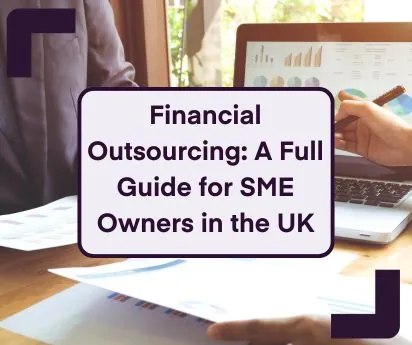
Essential guide to UK tax relief for 2019/20
8 Jan 2019Running your own business is a round-the-clock effort in most cases, and being completely submerged in work as an owner can often leave some opportunities untouched - like tax relief, for example.
We completely understand business owners want to focus on the core business and optimise the functions that make the business a success, be it their services, products or advice.
However, failing to identify tax breaks also means passing up on the chance to make your business more efficient, more competitive, and ultimately, profitable.
Better still, there are tax reliefs available to almost every company, regardless of your industry or type of work.
To illustrate the power of tax relief for your business, we’ve called on Riaz Kala, Associate Director at our accountants in London.
Employment Allowance
If your business employees staff through PAYE, then you’re eligible for Employment Allowance. This particular tax relief reduces your Employer’s Class 1 National Insurance bill by up to £3,000 per year.
Every time you run your payroll, your Employer’s National Insurance bill is reduced by the tax relief up until the point that either a) your £3,000 relief has been used up, or b) you reach the end of your tax year - at which point the cycle starts again.
So, who does this relief apply to?
You’ll be glad to learn that the majority of businesses, charities and Community Amateur Sports Clubs (CASCs) are eligible for this Employment Allowance.
If you employ a domestic, household or personal worker the relief cannot be claimed unless those employed are providing care or support work.
For those working under IR35 rules, carrying out at least half of their work for the public sector, or have a sole director and employee paid over the Secondary Threshold of £157 per week - Employment Allowance isn’t for you.
Small Business Rates Relief
In the event that your business has a rateable value of less than £15,000, you will most likely be eligible to claim Small Business Rates Relief.
Small Business Rates Relief sets out a scale for claims, whereby businesses with a rateable value of less than £12,000 pay no business rates, while those with a rateable value of north of £15,000 would not be eligible for relief on their rates.
Small Business Rates Relief is only available to those with one sole business property. For those expanding their business beyond a single premises and acquire a second property, they will still be entitled to Small Business Rates Relief for 12 months from the date upon which the second property is acquired.
There are other forms of rates relief, even if you aren’t eligible for Small Business Rates Relief – for example, your business property might be eligible for Rural Rates Relief if it is a protected business (such as the only shop or post office in your rural area) or you might be eligible for Retail Discount, which could be worth up to a third off your rates bill for tax years 2019/20 and 2020/21.
Annual Investment Allowance (AIA)
Annual Investment Allowance makes up part of your Capital Allowances and essentially allows you to deduct the entire value of qualifying items from you profits before tax.
Bear in mind - you may pay tax on these items if you are to sell them at a later date.
Items which usually qualify for Annual Investment Allowance are usually significant assets like machinery, buildings etc.
In saying that, you cannot claim Annual Investment Allowance on cars or any other items that have been given to the businesses.
In an attempt to incentivise investment, Annual Investment allowance has been temporarily increased to £1 million between January 1st, 2019 and December 31st, 2020.
Previously, the allowance was £200,000.
SME R&D Tax Relief
One for the innovators.
Research and Development, or R&D tax reliefs are more prominent than ever and are available to businesses working towards progression and development in the likes of technology and science.
HMRC have laid out a tricky criteria for R&D relief, so it’s important to be clear on whether or not your business fits their profile before proceeding with the idea of claiming relief on your investment.
On a broader scale, however, the relief for SME R&D tax relief is applicable to businesses with a headcount of less than 500 and one of either a) turnover below £100m, or b) balance sheet total under £86m.
If you are eligible for SME R&D tax relief, you can deduct an extra 130% of your qualifying costs from your annual profit.
If your business is loss-making, you can claim a tax credit of up to 14.5% of your surrender-able loss. Your qualifying costs can include staff costs, as well as consumable items, subcontractor costs and software fees but you can’t include capital expenditure or rent and rates.
Creative Industries Tax Relief (CITR)
If your business operates within a creative industry, you may be entitled to Creative Industries Tax relief.
These industries are:
-
Film (FTR)
-
High-end television (HTR)
-
Children’s TV (CTR)
-
Video games (VGTR)
-
Animation (ATR)
-
Theatre (TTR)
-
Orchestra (OTR)
-
Museums and galleries exhibitions (MGETR).
To be eligible, your business must satisfy a cultural test from the British Film Institute. Your business must also be liable to pay Corporation Tax in order to be eligible for Creative Industries Tax Relief.
If successful, you could be allowed to deduct between 80-100% of qualifying expenditure depending on which creative industry you operate in.
In summary, not every business will be eligible for each of the above, but for most businesses there may be a tax relief stone unturned that could open to door to growth and profitability for your business.
If you would like to explore the potential tax breaks your business can capitalise on, get in touch with our team of expert tax advisors and we would be happy to help you.





















